How to prune wisteria – and the best time to do it
Learn how to prune wisteria for a healthier plant with maximum blooms

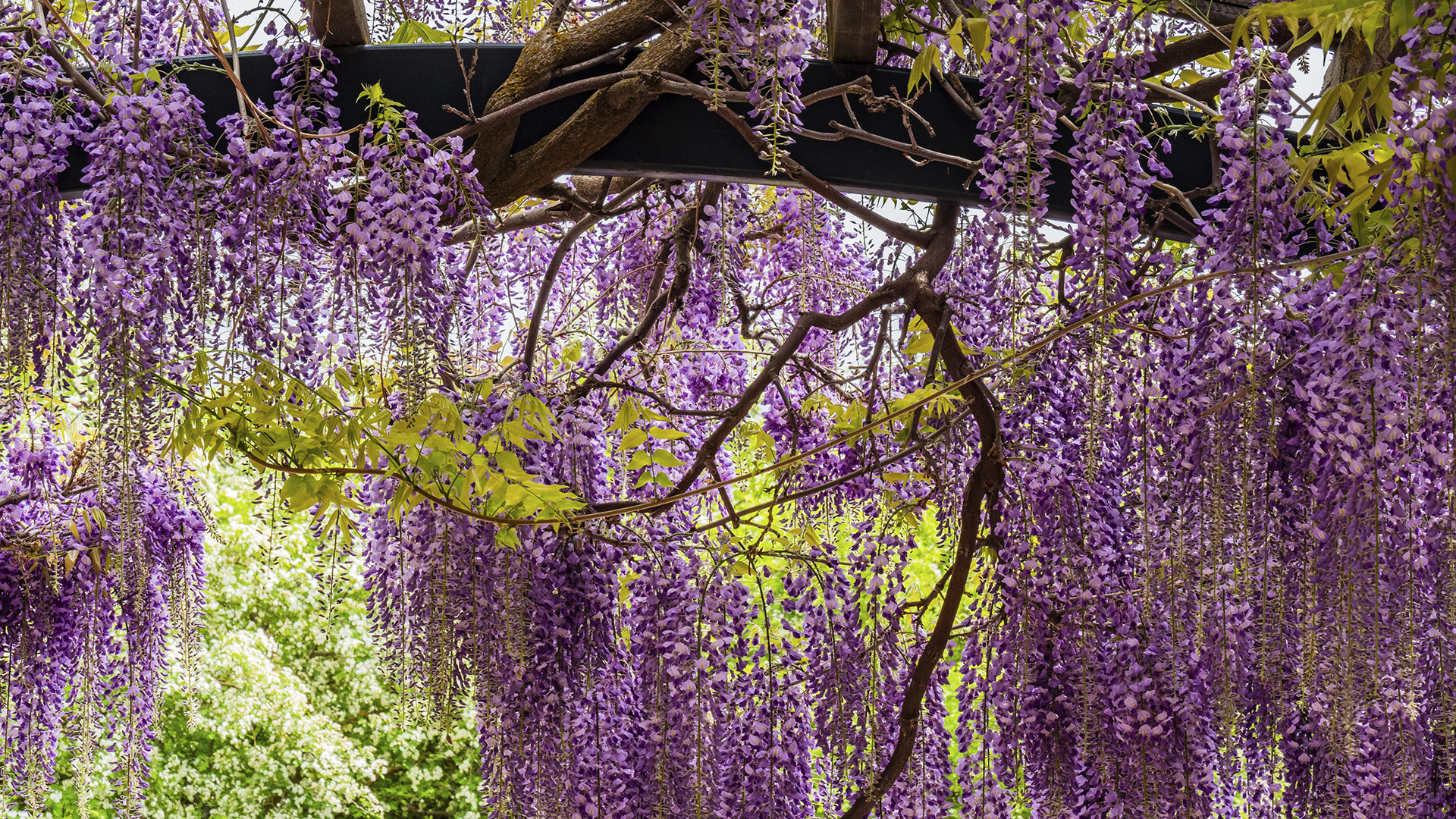
It’s important to know how to prune wisteria to get the best out of this glorious climbing shrub.
With its striking twisted vines and weeping clusters of perfumed flowers, wisteria is a romantic, whimsical plant evocative of cottage gardens, and once you know how to grow wisteria you can enjoying this climbing plant in many areas of your backyard.
While it makes a dramatic feature growing up the front of a house, wisteria is also one of the most delightful pergola ideas. Use it to frame a seating area, or add shade and privacy to the patio. Alternatively, consider trellis ideas for growing it against a fence or wall.
‘Wisteria is such a vibrant plant – I absolutely love seeing it hanging down an exterior or garden fence – it is so visually appealing,’ says Codey Stout, arborist, landscaper, and head of operations at TreeTriage.com.
‘Generally wisteria is a low-maintenance plant but to keep its richness throughout the years, pruning does need to be done twice a year – in summer and winter.'
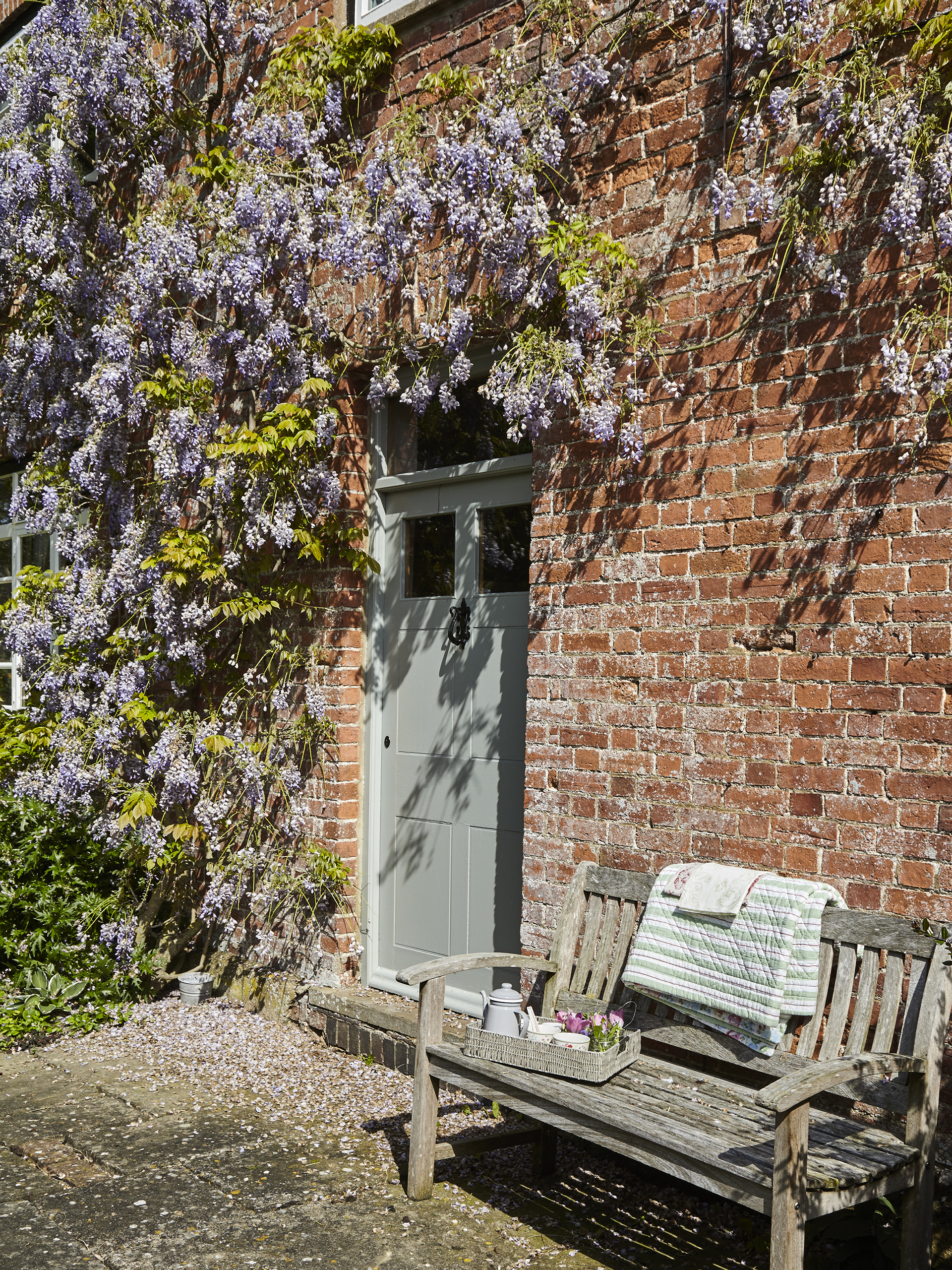
How to prune wisteria in summer
Pruning wisteria in the summer will allow more light and air into the plant, encouraging the wood to ripen and fresh growth to develop. As wisteria is a vigorous climber, pruning at this time of year will also help to keep it under control.
‘Wisteria flowers on old wood, meaning that the flower buds that will bloom next year actually form on this year’s growth. To avoid pruning out all of next year’s flower buds, some pruning should be done in the summer, after flowering ends,’ says Bloomscape's resident gardening expert Lindsay Pangborn.
Design expertise in your inbox – from inspiring decorating ideas and beautiful celebrity homes to practical gardening advice and shopping round-ups.
'Summer pruning will also make the plant look much tidier and will focus flower bud formation near the main branches of the vine, promoting a stronger and more manageable plant structure.'
You can do the first stage of your pruning right up until the end of summer, as long as the plant has finished blooming, and the cold fall weather has not yet set in.
A pair of hand pruners are essential for pruning wisteria. ‘It’s also helpful to have a pair of loppers nearby as well as a pruning saw for older plants that have developed thick, woody branches,’ adds Pangborn.
- When pruning wisteria in the summer, focus on cutting back the long, leafy, ‘whippy’ shoots. ‘Do a walkaround of your wisteria and find the extending growths,’ says Stout. 'Count the buds up to five and then clip the remainder of the stem.' remove to around 12in (30cm) and 5 or 6 leaves.
- ‘It is up to you how 'wild' or pruned you want the structure to be so don't worry about cutting too much, or not enough, but aim for an equal all-round prune,’ he adds.
- ‘Remove any dead or diseased wood as well as any weak growth, so your wisteria will have more room to grow,’ advises Stephen Webb, gardening expert and founder of Garden’s Whisper.
- ‘Ensure major branches are not crossing over each other and remove any branches that are causing overcrowding,’ says Pangborn.
- ‘Check for suckers at ground level and prune them away,’ adds Webb. ‘Suckers look like thin branches growing out of the main trunk or limbs.’
Pruning wisteria in this way will encourage a good show of flowers, but also keep the ambitious wisteria out of your guttering and away from your roof tiles.
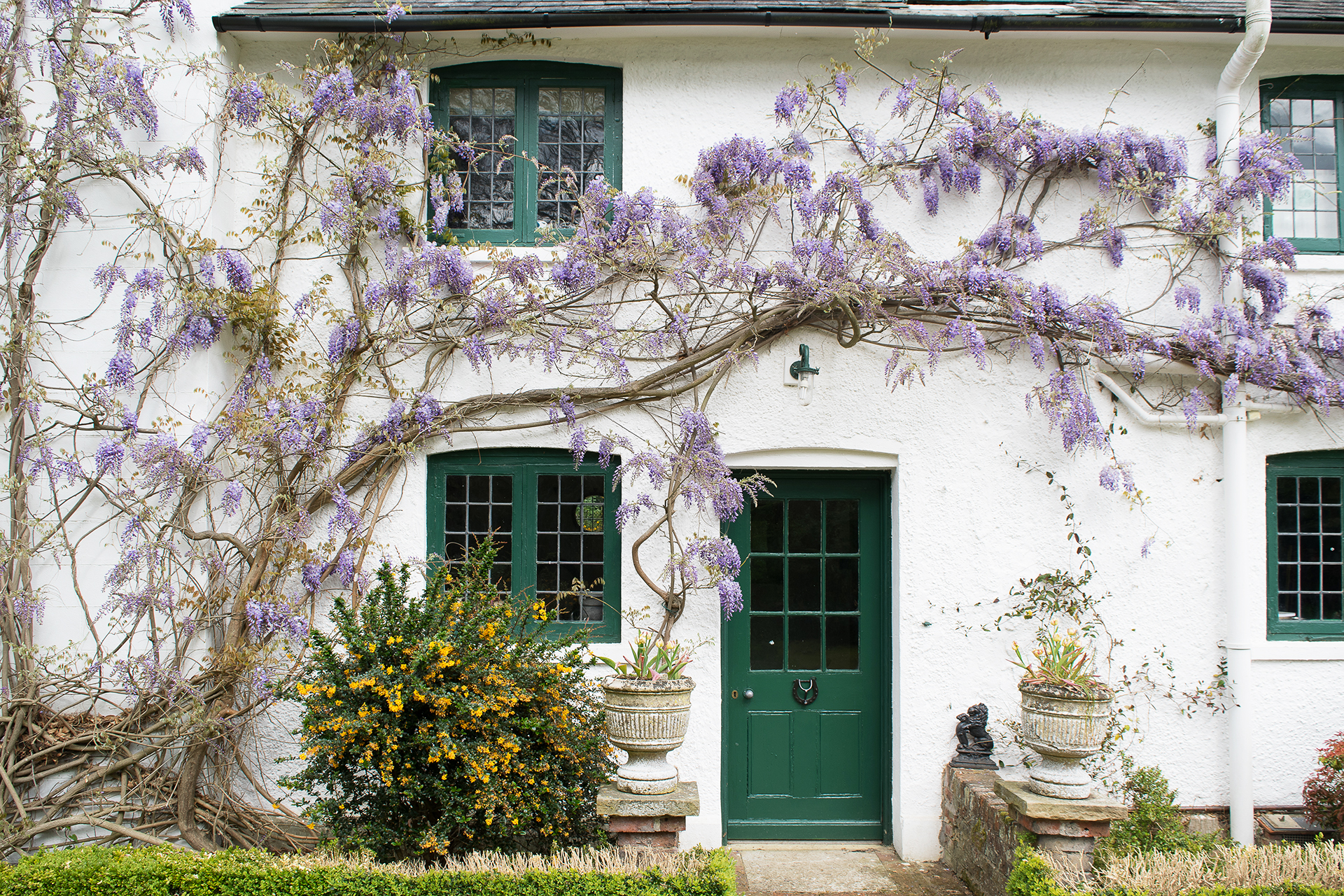
How to prune wisteria in winter
It’s important to prune wisteria for a second time in the winter. ‘With the somewhat wild growing habit of wisteria, it’s nearly impossible to get all the necessary pruning done in the summer when the leaves are on the plant,’ says Pangborn.
‘Winter is a great time to do another round of pruning, focusing on thinning the plant and keeping it trained to support structures. Winter pruning ensures that, come spring, your wisteria can put all its energy into producing beautiful blooms that won’t be hidden by long, leafy shoots.'
You will require your hand pruners for this round of pruning, along with loppers and a saw for thicker, harder branches.
- ‘When pruning wisteria in winter, you are looking to cut back any growth from the previous summer that is too long or out of place,’ says Chris Connell, lead gardener at the luxury Vintners Resort in Sonoma County, California. ‘Prune the shoots back to two or three buds to help encourage a more dramatic display of flowering come spring.’
- Remove any diseased or dead wood, as well as suckers growing from the roots.
- Don’t remove any large buds. ‘These buds will develop into full flowers come May,’ says Stout.
- 'Remove weak growth and any crossing or rubbing branches,' says Webb.
- ‘Winter pruning is the perfect time to work on reshaping the structure of your wisteria plant as needed – this is especially true if you are growing wisteria on a trellis or pergola,’ adds Connell. If needed, add any new supports or wires.
- However, Webb advises that pruning wisteria is more about controlling growth than creating an attractive shape: 'Traditionally, gardeners have pruned wisterias into a tree form or a long vase shape. While these traditional forms create stunning displays, it is not necessary to prune wisteria plants in such a way.'
- ‘Once your wisteria reaches the desired height, prune it yearly by removing one-third of its new growth. This will encourage stronger shoots with more flowers and less twiggy growth,’ he adds.
- 'Though they can be slow to establish, once wisteria have settled into their spots, they can become very vigorous growers,' says Pangborn. 'If planted in garden soil, they will typically not need fertilizer, however if you decide to fertilize them, be sure to stay away from products high in nitrogen as these will promote excessive leafy growth that will later need to be pruned back.'
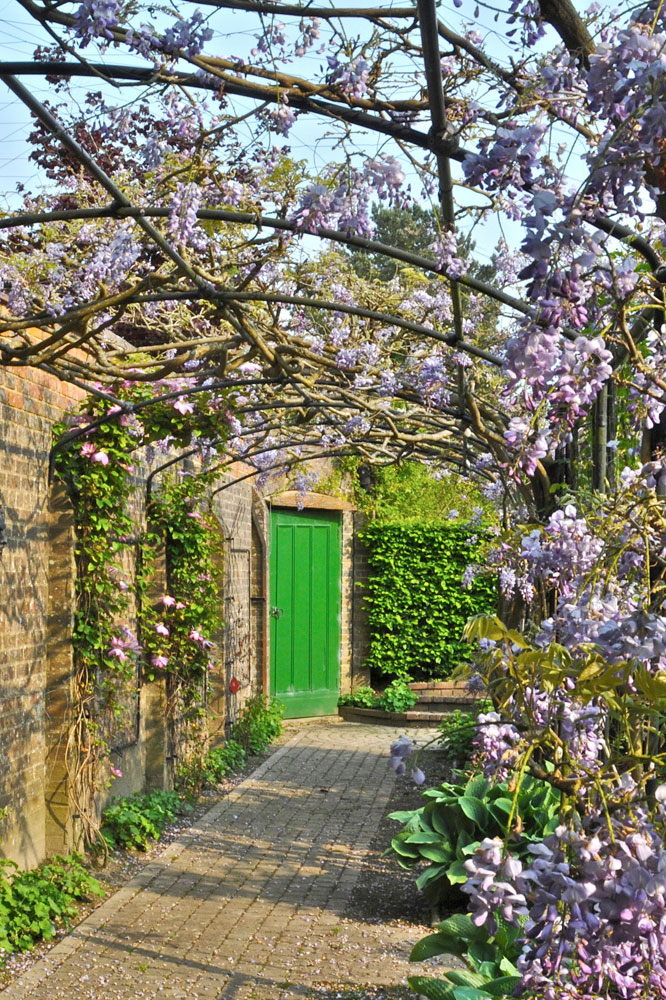
How to prune wisteria on a pergola
Pruning wisteria on a pergola or archway requires a slightly different technique than when grown up a wall.
'Wisteria is often used as an overhang to cover or climb on pergolas, trellises and fences, so its training can vary greatly,’ says Daniel McCurry, owner of Father Nature Landscapes, who offers the following advice on how to prune wisteria on pergolas.
- In order to control the blooms to fall through a pergola or another type of overhead structure, you need to allow one or two runners to grow upward until you want them to go in their opposing directions. At that point, you would allow them to grow horizontally.
- Then, allow growth at each bud nearest the joist of the pergola to allow one stem per joist.
- This will allow you to cut back the wisteria to the single stem growing on top of each joist every January. Do a follow-up cut back in August.
- Espalier and other forms require more tending to during the year.
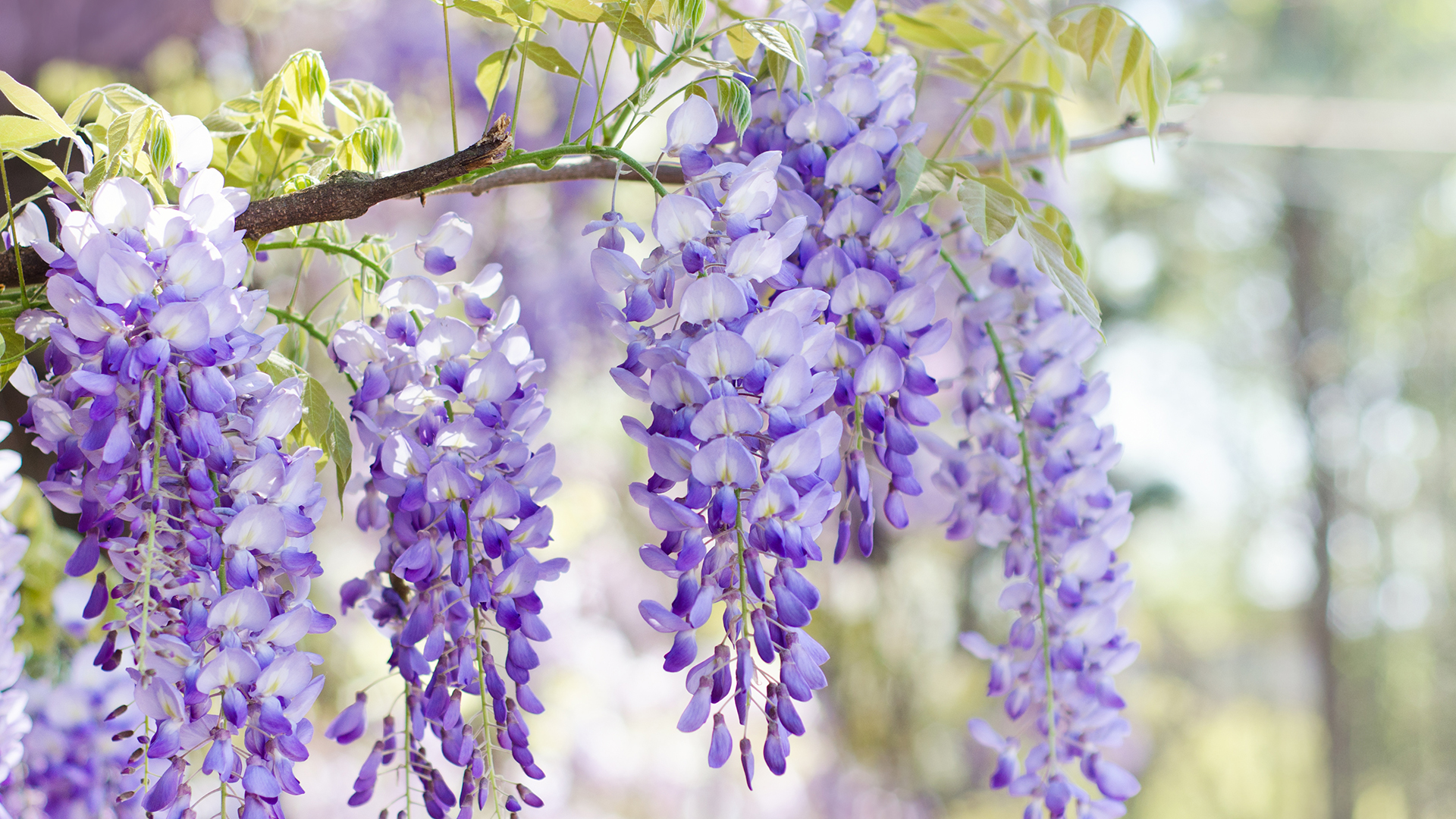
What month do you prune wisteria?
It is important to know when to prune wisteria to keep the climber healthy. The best month to prune wisteria may vary depending on your local climate and the variety of wisteria, but keep an eye on the plant between June and September. It’s important that the wisteria has finished flowering before its first prune. In winter, you will likely need to perform your second prune in around January or February, before the onset of spring.
Can wisteria be cut back hard?
Wisteria can be cut back hard if the plant has a lot of dry, old branches and looks very out of shape.
‘When your wisteria plants grow old, you need to remove all the dry and old-looking branches as well as all the limbs that touch the face of your house,’ says Bryan McKenzie, landscape designer, gardening expert and co-founder of the popular bumpercroptimes.com blog.
‘Sometimes it’s necessary to cut all the branches down to the main stem or even down to the ground to renovate the plant. This hard pruning will give your wisterias an impulse to shoot new strong branches.'
McKenzie warns that the wisteria may only start blooming two or three years after a hard cut back, but the growth will be of much higher quality.
'Hard pruning also allows you to re-train the plant and direct its growth vector towards a new pergola or arch.’
Do you cut dead flowers off wisteria?
You should cut dead flowers off wisteria to help it to keep blooming for longer.
‘Deadhead faded flowers immediately after they faded. This will encourage more flowers to form,’ says Webb.

Melanie has worked in homes and gardens media for two decades. Having previously served as Editor on Period Living magazine, and worked on Homes & Gardens, Gardening Etc, Real Homes, and Homebuilding & Renovating, she is now focusing on her passion for gardening as a Senior Editor at Gardening Know How. As a keen home grower, Melanie has experimented with pretty much every type of vegetable at some point – with mixed results. Often it is the simplest things that elude you, which may explain why she just can't seem to master zucchinis.